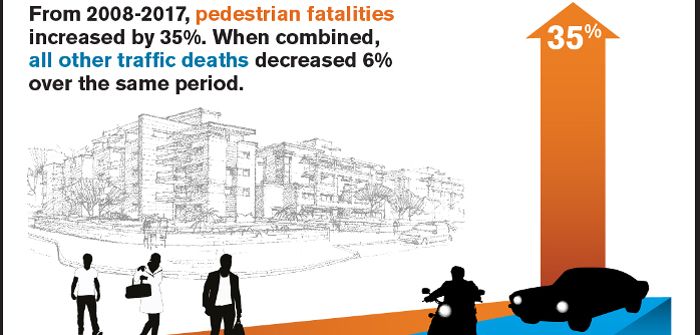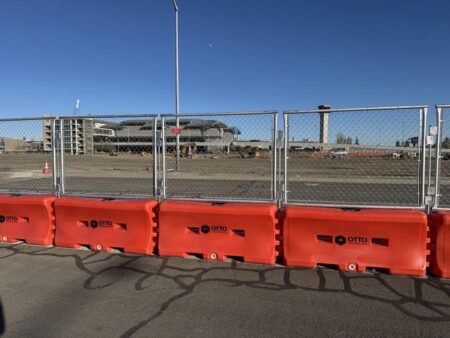A new report from the Governors Highway Safety Association (GHSA) projects that 6,227 pedestrian fatalities occurred across the USA in 2018, an increase of 250 deaths from the 2017 figure of 5,977 and the highest number in nearly three decades.
The GHSA’s annual Spotlight on Highway Safety report offers a first look at state and national trends in 2018 pedestrian traffic deaths, based on preliminary data provided by State Highway Safety Offices in all 50 states and the District of Columbia.
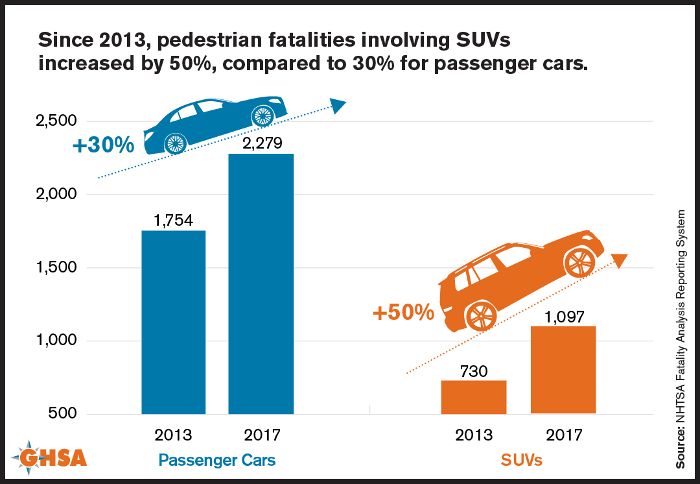 States were asked to report pedestrian fatalities for the first six months of 2018. After adjusting this raw data based on historical trends, GHSA projects a 4% increase in the number of pedestrians killed during the full 2018 calendar year.
States were asked to report pedestrian fatalities for the first six months of 2018. After adjusting this raw data based on historical trends, GHSA projects a 4% increase in the number of pedestrians killed during the full 2018 calendar year.
Pedestrians are projected to account for 16% of all traffic deaths in 2018, compared to 12% in 2008. The report notes that while advancements in motor vehicle safety and technology have increased survivability for vehicle occupants involved in crashes, pedestrians remain just as susceptible to sustaining serious or fatal injuries when struck by a motor vehicle. 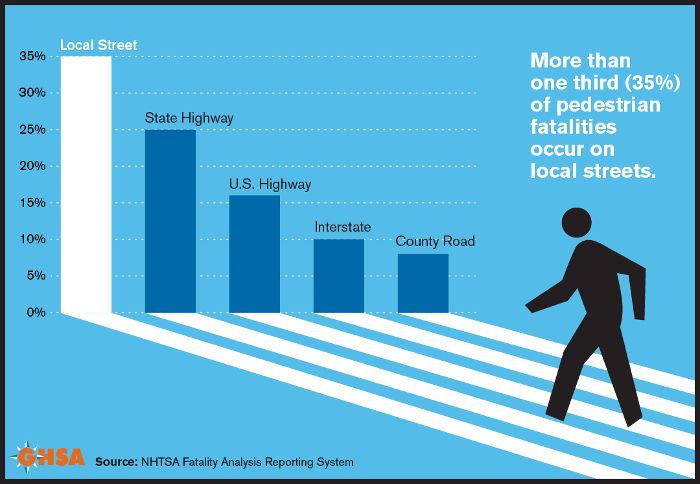 A number of trends offer insight into the many causes behind the rise in pedestrian fatalities:
A number of trends offer insight into the many causes behind the rise in pedestrian fatalities:
- More walking has increased exposure, with one survey estimating thatthe number of Americans walking to work in the past week increased about 4% between 2007 and 2016;
- Most pedestrian fatalities take place on local roads, at night, away from intersections, suggesting the need for safer road crossings. Over the past 10 years, night-time crashes accounted for more than 90% of the total increase in pedestrian deaths;
- Many unsafe driving behaviors, such as speeding and distracted and drowsy driving, pose risks to pedestrians, and alcohol impairment by the driver and/or pedestrian was reported in about half of traffic crashes that resulted in pedestrian fatalities in 2017;
- The number of sport utility vehicles (SUVs) involved in pedestrian deaths has increased by 50% since 2013. By comparison, normal passenger cars’ involvement in pedestrian fatalities increased by 30% over the same period. Although passenger cars still account for the majority of pedestrian deaths, SUVs, which generally cause more severe pedestrian injuries, make up an increasingly large proportion of registered vehicles.
Despite the projected increase in pedestrian deaths, the report identifies a number of promising lessons from state-reported data. For example, 23 states saw declines in pedestrian fatalities for the first half of 2018 compared to 2017, with six states reporting double-digit declines, and three reporting consecutive years of declines. Additionally, sharp decreases in pedestrian fatalities in some cities suggest that state-level data may obscure local success stories.
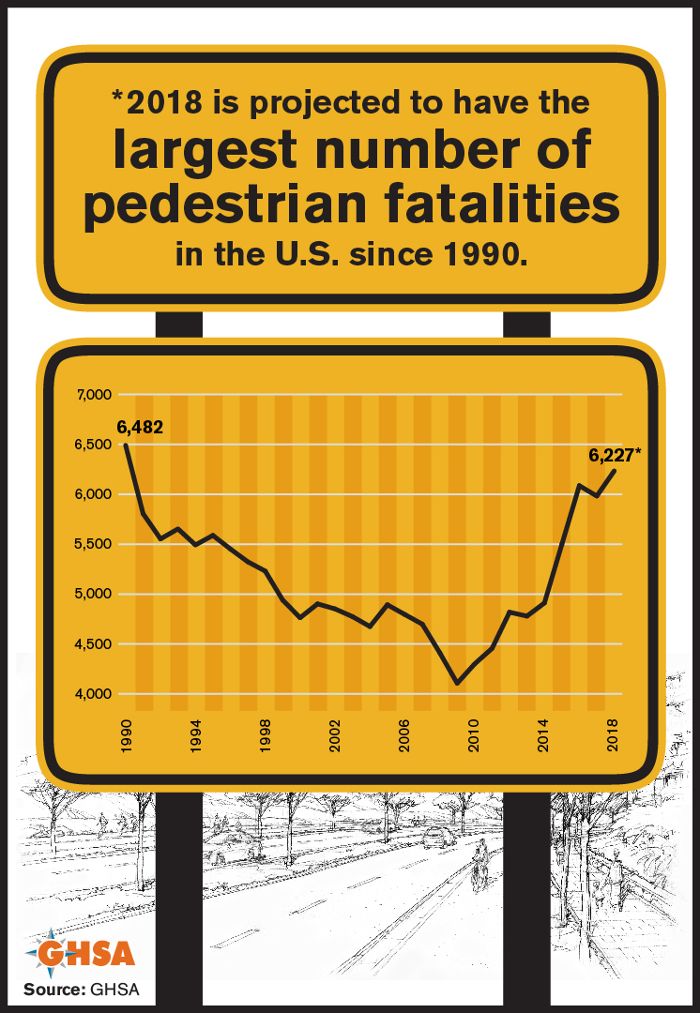 “While we have made progress reducing fatalities among many other road users in the past decade, pedestrian deaths have risen 35%,” noted GHSA’s executive director, Jonathan Adkins. “The alarm bells continue to sound on this issue; it’s clear we need to fortify our collective efforts to protect pedestrians and reverse the trend.”
“While we have made progress reducing fatalities among many other road users in the past decade, pedestrian deaths have risen 35%,” noted GHSA’s executive director, Jonathan Adkins. “The alarm bells continue to sound on this issue; it’s clear we need to fortify our collective efforts to protect pedestrians and reverse the trend.”
The report’s author, Richard Retting of Sam Schwartz Consulting, commented, “We have a range of proven infrastructure, engineering and behavioral strategies that we know can reduce pedestrian deaths. Improvements are being made, but take significant time and resources to implement.”


